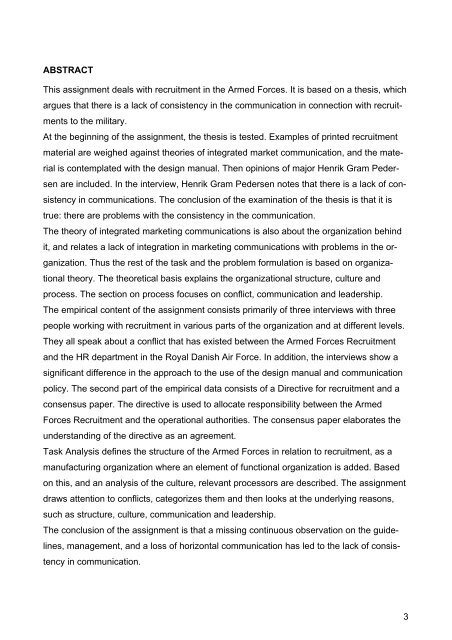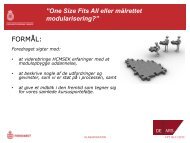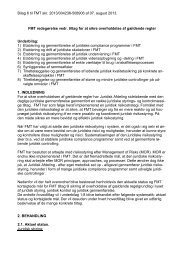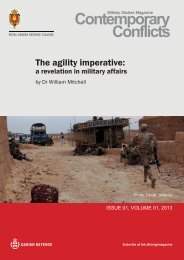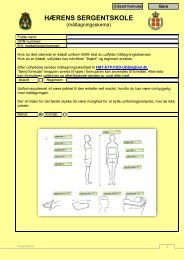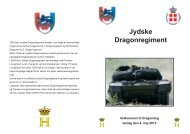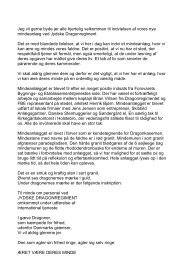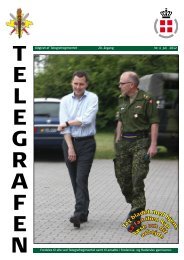uklassificeret - Forsvarskommandoen
uklassificeret - Forsvarskommandoen
uklassificeret - Forsvarskommandoen
You also want an ePaper? Increase the reach of your titles
YUMPU automatically turns print PDFs into web optimized ePapers that Google loves.
ABSTRACT<br />
This assignment deals with recruitment in the Armed Forces. It is based on a thesis, which<br />
argues that there is a lack of consistency in the communication in connection with recruitments<br />
to the military.<br />
At the beginning of the assignment, the thesis is tested. Examples of printed recruitment<br />
material are weighed against theories of integrated market communication, and the mate-<br />
rial is contemplated with the design manual. Then opinions of major Henrik Gram Pedersen<br />
are included. In the interview, Henrik Gram Pedersen notes that there is a lack of consistency<br />
in communications. The conclusion of the examination of the thesis is that it is<br />
true: there are problems with the consistency in the communication.<br />
The theory of integrated marketing communications is also about the organization behind<br />
it, and relates a lack of integration in marketing communications with problems in the or-<br />
ganization. Thus the rest of the task and the problem formulation is based on organizational<br />
theory. The theoretical basis explains the organizational structure, culture and<br />
process. The section on process focuses on conflict, communication and leadership.<br />
The empirical content of the assignment consists primarily of three interviews with three<br />
people working with recruitment in various parts of the organization and at different levels.<br />
They all speak about a conflict that has existed between the Armed Forces Recruitment<br />
and the HR department in the Royal Danish Air Force. In addition, the interviews show a<br />
significant difference in the approach to the use of the design manual and communication<br />
policy. The second part of the empirical data consists of a Directive for recruitment and a<br />
consensus paper. The directive is used to allocate responsibility between the Armed<br />
Forces Recruitment and the operational authorities. The consensus paper elaborates the<br />
understanding of the directive as an agreement.<br />
Task Analysis defines the structure of the Armed Forces in relation to recruitment, as a<br />
manufacturing organization where an element of functional organization is added. Based<br />
on this, and an analysis of the culture, relevant processors are described. The assignment<br />
draws attention to conflicts, categorizes them and then looks at the underlying reasons,<br />
such as structure, culture, communication and leadership.<br />
The conclusion of the assignment is that a missing continuous observation on the guide-<br />
lines, management, and a loss of horizontal communication has led to the lack of consis-<br />
tency in communication.<br />
3


